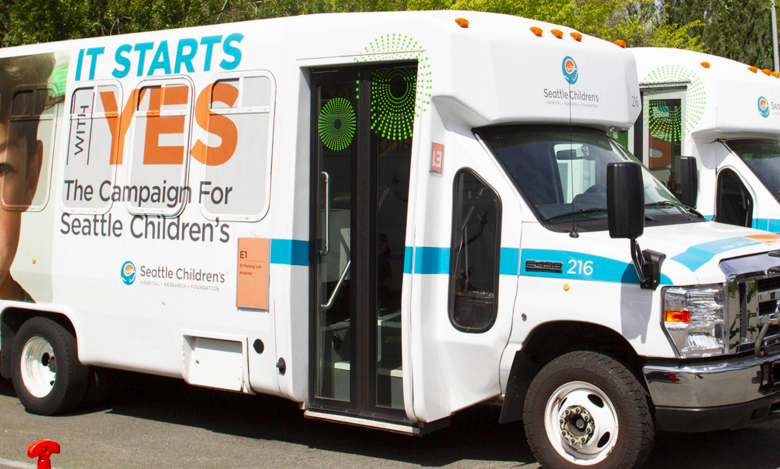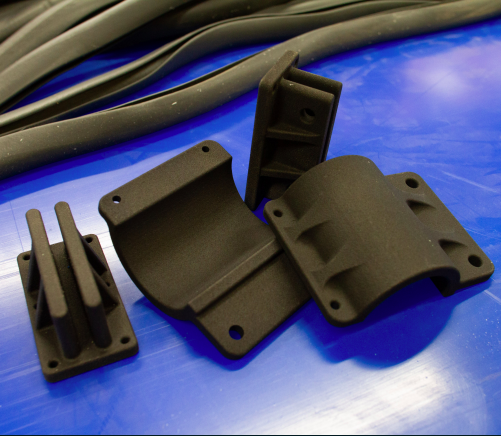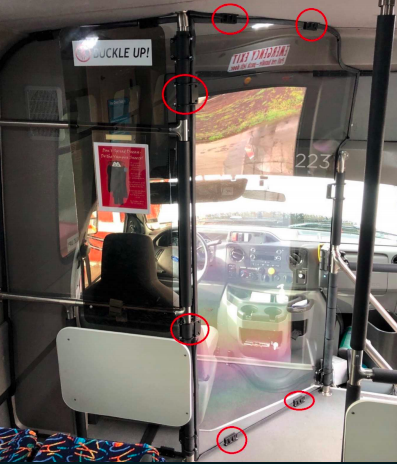Californian rapid prototyping service provider GoProto and design and engineering specialist Function Foundry, have collaborated to help protect high-risk bus drivers at Seattle Children’s Hospital using 3D printing, in response to the COVID-19 pandemic.
The Seattle Children’s Hospital relies on a shared shuttle bus program to transport patients and staff. Recognizing a need to protect shuttle bus drivers and their riders, GoProto stepped in with the help of Function Foundry to develop 3D printed barriers and guards to prevent the spread of the virus.

Protecting those most at risk
With the current COVID-19 having a significant impact on the day-to-day operations of society, the healthcare system has borne a disproportionately large share of this disruption. As such, it has had to change its protocols and standard operating procedures on-the-fly as providers seek solutions to address new requirements for safety.
In the case for Seattle Children’s Hospital, there was early recognition of the risks of COVID-19 posed to staff and patients using the shared shuttle program to get to and from the campus. Although riders of the daily shuttles vary in age, the drivers were all over 60 years old, and thus fell into the high-risk category.
However, the shuttle program is a logistical backbone of the campus for many doctors, nurses, and staff at Seattle Children’s Hospital. It was thus necessary to establish a protective barrier between the shuttle bus drivers and their riders, and to produce this solution fast. In response, Seattle Children’s Innovation Pod soon set to work, utilizing both in-house engineering and private-sector partners to develop a quick countermeasure.
After some initial fact finding and engineering, they brought in GoProto, an on-demand, custom manufacturing services provider and member of the HP Digital Manufacturing Network. The company provides services for additive manufacturing, CNC machining, sheet metal, cast urethane, injection molding and finishing, specializing in manufacturing parts for product development in medical, aerospace, industrial, automotive, and more.

The advantages of 3D printing when supply chains are under stress
Responding to Seattle Children’s Hospital’s request, GoProto partnered with Function Foundry, an industrial design and fabrication company, to design the parts, which GoProto then 3D printed for the project. Together the firms identified the challenges faced by this build, as well as the best solutions with the given cost and time constraints.
Drew Fletcher, owner of Function Foundry, recognized that the project would require customized barriers and guards that could be secured to differing surface materials within the shuttle bus interior. This included fiberglass, fabric covered roof liners, metal tubing, and molded plastic.
Visiting Seattle Children’s Hospital to scope out the design with the customer, GoProto and Function Foundry initially prototyped a concept using cardboard cutouts and then did some proof of concept plastic inserts. Drew wanted the design to be durable and inconspicuous inside the shuttle bus. GoProto saw an opportunity to utilize 3D printing to accelerate the process and fabricate parts that were robust and aesthetically pleasing. 3D printing also allowed the firms to establish a complex design geometry for the parts that dampened any vibration or noise from driving.
Furthermore, 3D printing helped the manufacturers overcome the bottleneck in the supply chain as a result of the current pandemic, as many parts such as sheeting, clamps, fasteners, vibration abatement material, and other raw materials have been directed towards PPE production. “This pandemic has created a bit of a traffic jam where everyone is doing custom applications, and they are turning to the same vendors for parts and materials. So, ordering specialty off-the-shelf hardware could have required a longer lead-time than simply 3D printing the exact parts we’d need”, explained Fletcher.
Using HP’s Multi Jet Fusion 3D printing technology, GoProto and Function Foundry were able to design and fabricate custom parts with a shorter lead-time, and at a lower cost, than traditional channels.
Prototypes were delivered in days, with finished parts soon after in the exact quantity and quality required; the entire process from design to finished prototype was approximately ten days. This allowed Function Foundry to complete the install in an additional two-week time frame. The 3D printed components met the demands of the application such as vibration concerns, interior contours, and differential surfaces.

3D printing during the pandemic
Since the early days of the COVID-19 pandemic, 3D printing has played a key role in helping to ease the pressure on supply chains and governments. This could be seen in Italy, where 3D printing was used to manufacture 100 respirator valves in 24 hours for a hospital in Brescia after it had run out.
After this high profile example, all parts of the community, from professional additive manufacturing providers and makers to designers and suppliers, have volunteered their skills and expertise in additive manufacturing to help respond to the global crisis.
Just recently, CraftBot announced it had opened a Rapid Local Manufacturing Centre (RLM) located in Cornwall, UK, to support the national effort in producing personal protective equipment (PPE) for key workers. In another example, Materialise developed a 3D printed hands-free door opener to help global containment efforts, sharing the design of the product for free.
You can view all the ways in which 3D printing has been leveraged during this crisis on our blog dedicated to the 3D printing community’s response to the COVID-19 pandemic.
The nominations for the 2020 3D Printing Industry Awards are now open. Who do you think should make the shortlists for this year’s show? Have your say now.
Subscribe to the 3D Printing Industry newsletter for the latest news in additive manufacturing. You can also stay connected by following us on Twitter and liking us on Facebook.
Looking for a career in additive manufacturing? Visit 3D Printing Jobs for a selection of roles in the industry.
Featured image shows Seattle Children’s Hospital bus. Photo via GoProto.


